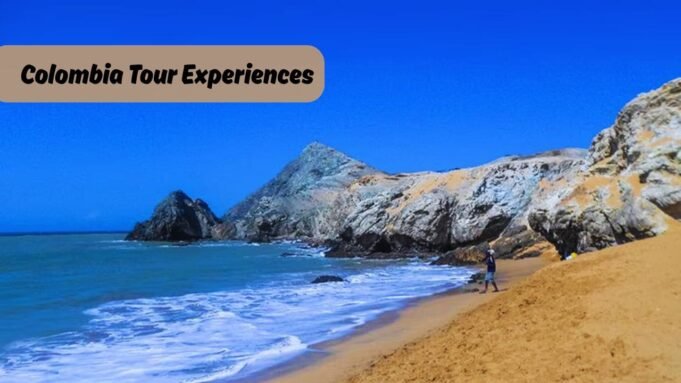Colombia has shaken off its complicated past and emerged as one of South America’s most exciting destinations. The country offers everything from Caribbean beaches to Amazon rainforest, colonial cities to modern metropolises.
What makes Colombia special isn’t just the diversity of landscapes – it’s the warmth of the people and the authenticity of experiences that haven’t been overly commercialized yet.
Many travelers still hesitate about visiting Colombia, but those concerns are largely outdated.
The country has transformed dramatically over the past two decades, and tourist infrastructure has improved while maintaining the genuine character that makes it so appealing.
Cartagena’s Old City: Getting Lost in Colonial Magic
Cartagena’s walled old city feels like stepping into a different century. Narrow cobblestone streets wind between colorful colonial buildings, each one seemingly painted in a different shade of yellow, blue, or pink.
The Spanish built these walls in the 16th century to protect against pirates, and today they enclose one of the best-preserved colonial cities in the Americas.
The old city works best when you abandon any attempt at efficient sightseeing.
Instead, wander without a plan. Duck into small cafes when you need a break from the heat. Stop at street vendors selling fresh fruit juice. Watch the sunset from the city walls while locals play music and socialize.
Don’t miss Cartagena:
- Clock Tower entrance and Plaza de los Coches
- Palace of the Inquisition museum
- Las Bóvedas shopping arcade is built into the city walls
- Sunset drinks at Cafe del Mar on the ramparts
- Day trip to nearby Rosario Islands
The heat can be intense, especially midday. Early morning and late afternoon offer the best light for photography and the most comfortable temperatures for walking around.
Coffee Country: More Than Just the Perfect Cup
Colombia’s coffee region, known as the Coffee Triangle, produces some of the world’s finest beans. But the experience goes far beyond just tasting great coffee. Rolling green hills dotted with coffee farms create some of the country’s most beautiful landscapes.
Staying at a working coffee finca gives you insight into the entire process, from planting to harvesting to roasting.
Many farms offer hands-on experiences where you can pick coffee cherries, learn about processing methods, and roast your beans.
The region’s main towns – Armenia, Pereira, and Manizales – each have their character.
Salento, a small colorful town, serves as the gateway to Cocora Valley, where towering wax palm trees create an almost surreal landscape.
Guided Colombia tours often include coffee farm visits as part of broader itineraries, allowing travelers to experience the region’s highlights without the complexity of arranging farm visits independently.
Amazon Adventures: Wildlife You Won’t Believe
The Colombian Amazon is less developed for tourism than its Brazilian or Peruvian counterparts, which means more pristine wilderness and authentic indigenous communities.
Leticia, the main gateway town, sits at the border with Brazil and Peru, creating a unique tri-border experience.
River journeys into the jungle reveal incredible biodiversity. Pink dolphins surface near your boat, howler monkeys announce dawn and dusk, and countless bird species create a constant soundtrack.
Night excursions bring out entirely different animals – caimans, nocturnal birds, and insects that seem too colorful to be real.
Indigenous communities welcome visitors to share their knowledge of jungle medicine, fishing techniques, and traditional crafts.
These interactions feel genuine rather than performative, partly because mass tourism hasn’t reached this region yet.
Salsa Dancing in Cali: Where the Music Never Stops
Cali calls itself the world’s salsa capital, and after a night in the city’s dance clubs, you’ll understand why. This isn’t tourist-focused dinner theater salsa – it’s the real thing, where locals dance with passion and skill that will humble most visitors.
The music starts early and goes late. Neighborhood clubs, fancy venues, and street festivals all pulse with salsa rhythms. Even if you can’t dance well, the energy is infectious and welcoming.
Cali’s salsa scene has deep cultural roots tied to the city’s Afro-Colombian heritage and its historical connections to Cuban and Caribbean music. Learning even basic steps enhances the experience enormously.
Lost City Trek: The Hike That Changes Everything
Ciudad Perdida, or Lost City, predates Machu Picchu by about 650 years. Reaching it requires a multi-day trek through jungle terrain that ranges from challenging to genuinely difficult.
The journey filters out casual tourists, creating a more intimate experience with this archaeological wonder.
The trek typically takes 4-6 days, depending on your route and fitness level. You’ll sleep in hammocks at basic camps, ford rivers, and climb steep jungle paths.
Indigenous Kogui guides share knowledge about the site’s history and their ancestors who built it.
Unlike many famous archaeological sites, Lost City remains relatively unknown outside Colombia. The trek groups are small, usually 8-12 people, and you might have the ruins largely to yourself during your visit.
The physical demands are real – this isn’t a casual hike. But reaching Lost City after days of jungle trekking creates a sense of accomplishment that few tourist experiences can match.
To Know More: Can You Bring a Trekking Pole on a Plane?















